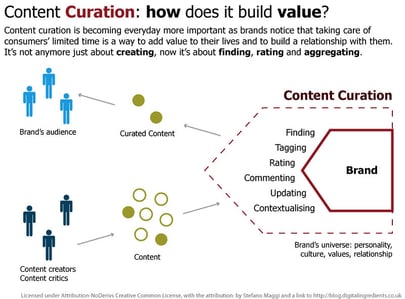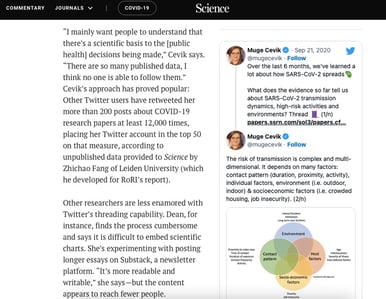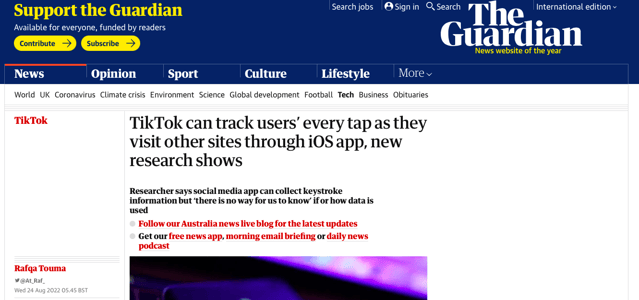As a publisher, creating content that your audience finds relevant is a priority. Besides publishing content that you have spent significant time planning and creating, content curation is a great way to address your audience’s queries by repurposing content that exists online.
In case this term is new to you, content curation refers to the process of selecting, organizing, and presenting online content and information to your audience in a manner that is relevant to them. When you share content that was created by other content creators and present them in a manner that your audience will find helpful, you play the role of a curator.
Content curation is a win-win for both you and your audience. However, this process goes beyond sharing posts or links. As a Content Curator, the first step of the process is to identify the best piece of content that your audience would love to discover. The next step is to offer unique value. As an example, if the post you have discovered is around a topic that your audience is interested in, but is from a different country, a good way you could add value is to make it relevant by adding local context.
Also Read: A Complete Guide To Content Engagement
Besides enabling greater relevance, publishers also benefit from reduced costs and investment of resources and time towards producing fresh content. A good way to go about this would be to reach out to the original creator and seek their consent before sharing their social post or blog.
Building a connection with content creators and seeking their permission also increases the possibility of them amplifying your post through a backlink or share. This will ramp up the SEO results you see on your website.
Things to keep in mind before getting started
Before you get started with content curation, here are a few things you need to keep in mind:
Planning your stories

rawpixel.com/ Creative Commons
When you know your audience, you have a better understanding of the kind of content they would like to consume on your platform. This is why it is essential for you to research thoroughly before sharing content from other creators through your accounts.
There are 3 steps to plan your stories effectively.
- Research: Check various platforms to find the best content for your audience. For newsrooms, there are various tools such as BuzzSumo and Hootsuite that have a dashboard that Is up-to-date with the latest news articles. You can also source content through various newsletters, communities, social media pages, etc.
- Selecting Content: Select the content you feel offers the most value to your audience. Read the post in detail and choose wisely.
- Sharing: Once you’ve identified the posts you want to share, fact-check them. It isn’t uncommon to come across misinformation and misleading articles. Once you are sure about its authenticity, seek permission from the original publisher to republish it on your website.
Make it stand out by offering unique value
Business owners all over the world are trying to stand out in their respective industries by creating large amounts of content.
With so many publishers writing about a particular issue, it is difficult for consumers to go through everything and locate the best information. Businesses that curate content and publish their own material to assist clients in easily obtaining accurate information from the best sources in the business.
 Stefano Maggi/ Creative Commons
Stefano Maggi/ Creative Commons
If you’re summarizing a blog on the Top 10 reads of 2022 for your audience, you can add more value to it by adding your review, or a short summary for each book.
Here are ways to add more value to the content you curate:
- Share the most relevant and important information
- Ensure your content is up-to-date and fresh
- Don’t just curate, add your own perspective to the content
- Optimize the title and highlight the focus piece
- Add images or media that are relevant to the article
What do experts say on the topic?
Content curation is not just about reading multiple pieces of content and coming up with a concise piece of information for your audience. To add more credibility and value to your piece, you can add opinions from thought leaders in the field to supplement your information.
Seeing real-life examples and reading first-hand experiences can help your audience stay hooked to the piece. Views posted by experts on social media are a great addition to your article. It adds value by bringing in their expertise and enriches your post.Here is post by science.org that writes about how social media can enrich content by bringing in an expert point of view.

image: Science.org
Understanding credit and sources
Is crediting ethical or not? There is no one answer to this question, it depends on the situation and the circumstances involved. There are some people who believe that crediting is always ethical, while others believe that there are certain situations where it’s not.
For instance, giving credit for an original piece is ethical. But, there is a possibility that the content piece you’re referring to has information from a different source altogether. In that case, giving credit to the root source would be better.
Offer credit to original sources of information

image: The Guardian
In a newsroom, crediting is a process to ensure that all reporters and editors receive credit for their work. This is typically done by assigning each story to a specific reporter or editor and then giving each story its byline.
Crediting is important for two main reasons:
- It ensures that everyone receives credit for their work, which is important for both morale and job satisfaction.
- It helps avoid plagiarism and gives recognition to the original creator for their work.
There are a few different ways to credit reporters and editors in a newsroom. The most common method is to list the credits in the byline of each story. If the story has information from a different source, it is ethical to link back to the original source. Some newsrooms also have a separate crediting system, which lists credits for each story in a separate section.It is a good practice to credit the original source of information here along with the author writing the piece.
Also Read: The Best Content Syndication Platforms for News and Media Publishers
Regardless of the method used, crediting is an important part of a newsroom and should be taken seriously to ensure that everyone receives the credit they deserve for their work.
The opportunity for the news and publishing industry
Content curation is an essential skill for any newsroom in the modern media landscape. Publishing content that is both accurate and timely is essential to keeping readers engaged, and content curation can help make that happen.
In the newsroom, this might mean scouring the internet for relevant stories, fact-checking articles, and curating stories to share with readers.

image: Yahoo Sports
It’s important to remember that not all content is created equal. It’s crucial to curate content from reliable sources that have a good reputation for accuracy. Sharing content from unreliable sources can damage your credibility and drive readers away.
By taking the time to curate content pieces carefully, you can help ensure that your newsroom is pushing out the best possible content to your readers.
Getting Started with Content Curation
It's important to keep your target audience in mind when you're curating content. There are plenty of tools out there that can help you find the right content for your audience. You can start by figuring out what they're interested in and then choosing the right sources.
Also Read: Content Syndication: What News Publishers Need To Know
There are multiple sources of great information out there. Here is how you can narrow down your sources.
- Reputable publications in your industry.
- Blogs from other companies you partner with.
- Your clients, if you're an agency or consultant.
Wouldn’t it be great to have all of the great content in one place for your readers? As the online world grows and spreads, the demand for media consumption increases, opening up new opportunities for publishers to cater to. A mix of original and curated content is required to meet this increasing demand.






